Conducting a Prescribed Burn
Table of Contents
Pre-Burn Checklist
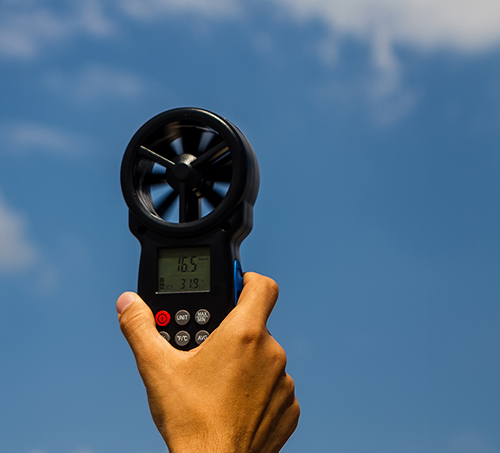
Review the burn plan. Does the planned burn fit the prescription? Complete the following checklist before igniting any vegetation.
- Check the weather forecast for several days leading up to the burn and the morning of the burn. Collect onsite weather data immediately before the burn to confirm that the weather parameters for a safe burn are met.
- Install warning signs and traffic control measures.
- Observe adjacent land use activities to minimize smoke impacts and divert smoke away from these activities.
- Brief personnel about the burn plan. Make sure all duties have been assigned and that fire crew members are clear on their assigned duties.
- Notify staff back at the county or city offices and local authorities, including the local fire department.
- Check all equipment that will be used.
The Burn
Ignition
Establish the anchor point at the most downwind position before continuing down the fire line. This kind of fire into the wind, known as a “backing fire,” will maintain a slower, controlled burn.
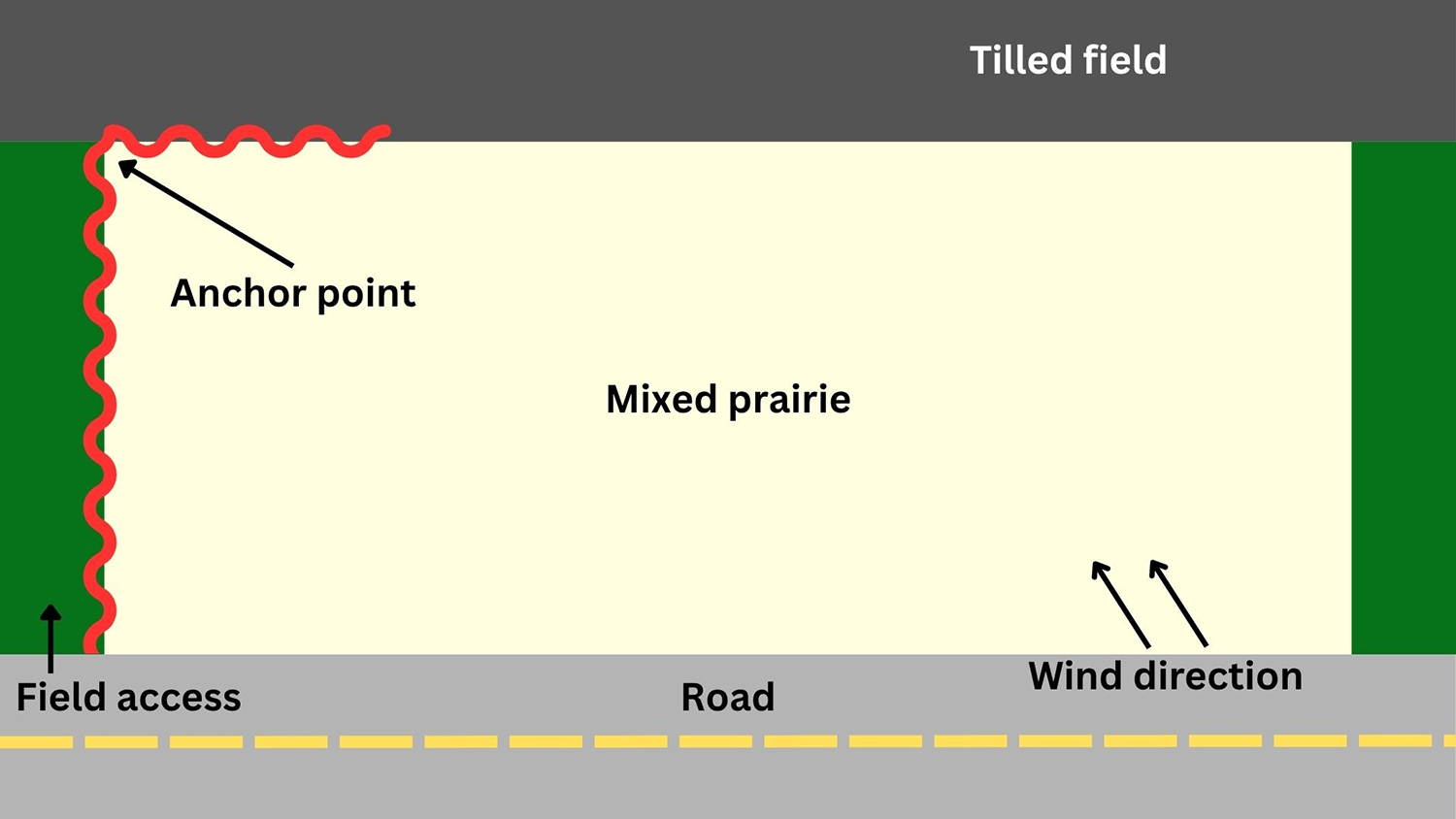
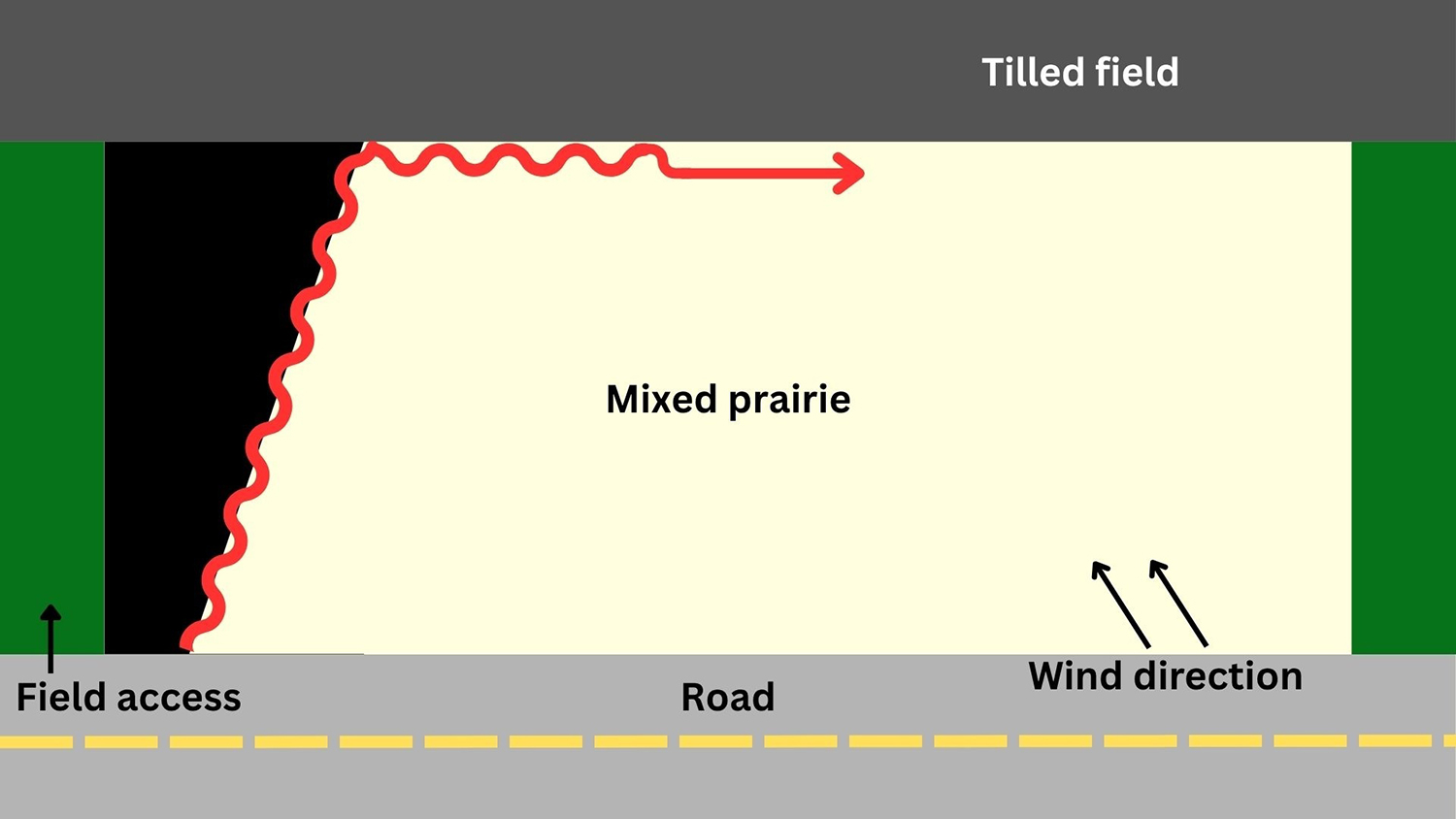
Continue ignition along the fire line, pausing as needed to allow for suppression near potential hazards.
If the fire is progressing slowly due to conditions such as low fuel loads, undesirable wind patterns, or high humidity, use the flanking fire technique to increase fire intensity. A flanking fire is set on the sides of a section of the burn site parallel to the wind (neither against nor with the wind).
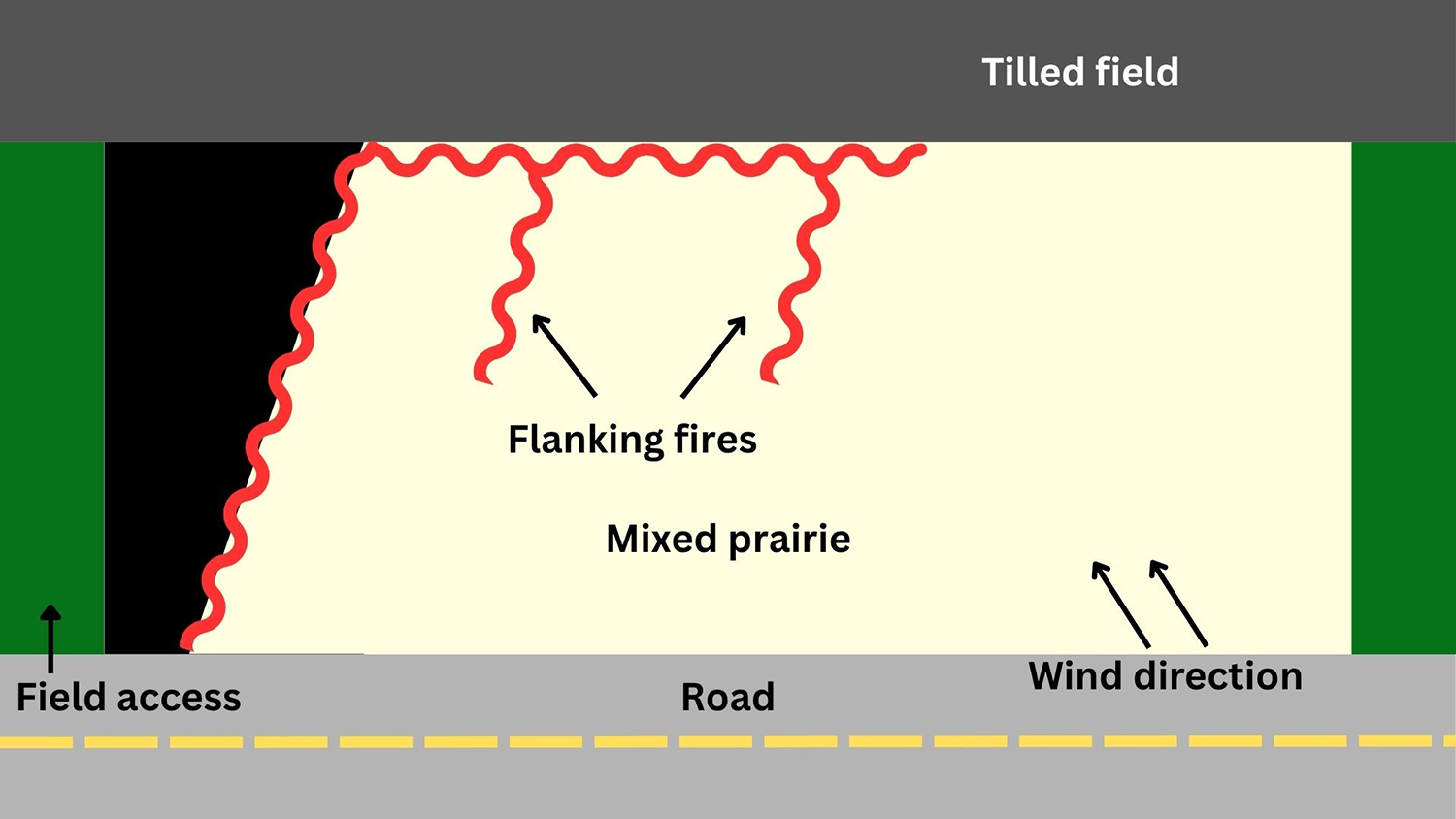
Slow backing fires result in the least amount of smoke and the most complete combustion; however, igniting a fire that moves with the wind, known as a “head fire,” may, at times, be desirable to speed up the burn. After adequate black lines have been established along all downwind positions, a head fire can be carefully ignited.
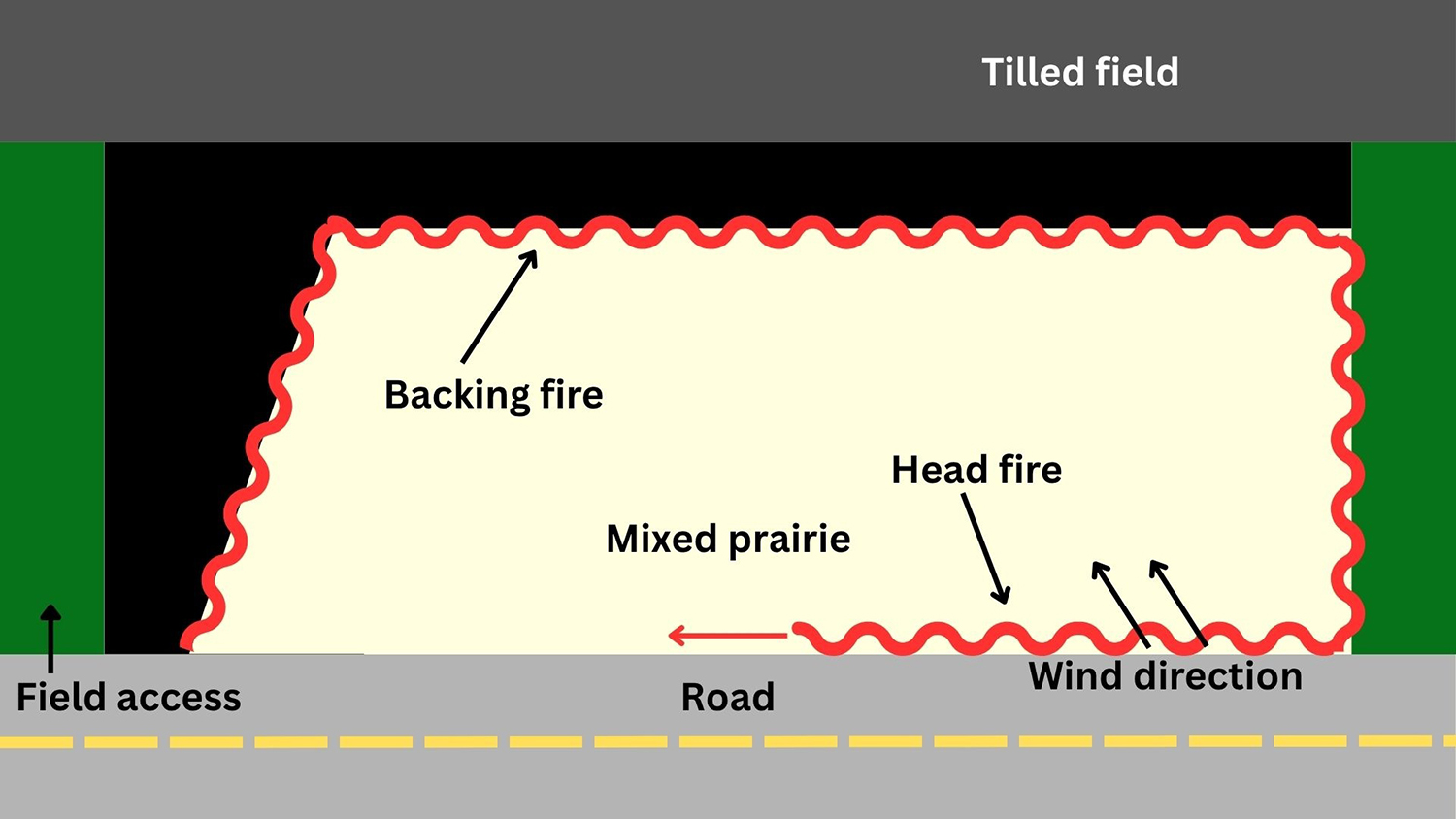
When closing out the prescribed burn, ensure that all fire breaks have been secured by checking that the risk of the fire escaping the burned area is minimized or eliminated:
- Ensure that all flames and smoldering materials have been extinguished.
- Monitor for reignition.
- Check that the ground is cool to the touch.


